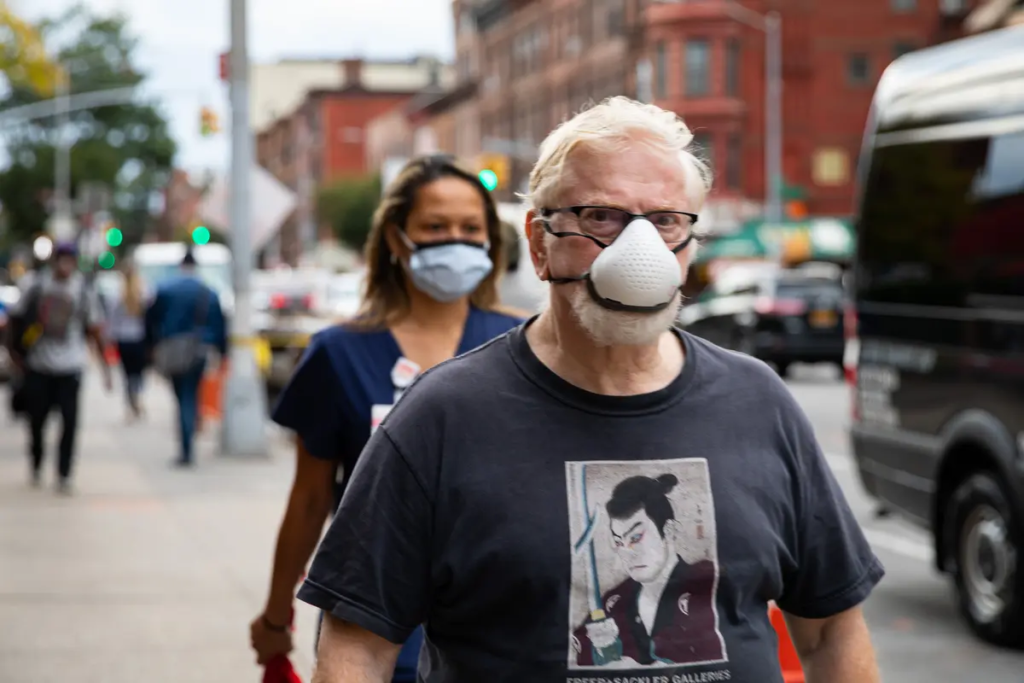
By Jack Phillips

‘The era of mask mandates caused a lot of problems,’ said Sen. J.D. Vance.
The U.S. Senate approved a proposal that would block the Department of Transportation from using federal funds to enforce mask mandates, with some Democrats joining Republicans to pass the measure.
The amendment, proposed by Sen. J.D. Vance (R-Ohio), passed in a 59–38 vote on Wednesday.
“The era of mask mandates caused a lot of problems,” Mr. Vance said on the floor. “It caused problems for our kids. It caused developmental delays for school children. It caused a lot of rancor and a lot of division within our common American family. If people want to wear masks, of course, they should be able to. But if people don’t want to wear masks on airplanes, on transit, they should have that option as well. And that’s all that my amendment does.”
The measure prevents federal mask mandates on passenger airlines, trains, and rapid transit buses as well as any other transportation program that receives federal funds until the end of the current fiscal year.
“It is narrowly scoped,” the GOP senator said. “It applies for the next 11 months and applies to transportation cases. And I think it is reasonable to not ask the American people to reenter the era of mask mandates. My amendment does that.”
A number of Democrats who are up for reelection in 2024 voted in favor of the measure, including Sens. Sherrod Brown (D-Ohio), Joe Manchin (D-W.Va.), and Jon Tester (D-Mont.).
History of Mandates
In January 2021, the U.S. Centers for Disease Control and Prevention (CDC) issued an order that mandated travelers in public transportation hubs to wear a mask along with a separate order to mandate masks for any interstate travel, applying to boats, ferries, buses, airplanes, and other public transit forms.
A federal judge in 2022 ended the federal mask mandate, while the federal government’s public health emergency for COVID-19 ended earlier this year.
In September, Mr. Vance attempted to force a vote on a piece of legislation that would prevent any federal official, including the president, from issuing a mask mandate until the end of 2024. That was blocked by several Democrats, who objected to it.
Sen. Ed Markey (D-Mass.), who objected to Mr. Vance’s previous bill, claimed that it could prevent public health officials from making the right decisions regarding future pandemics.
Mr. Markey described it as “little more than an attempt by Republicans to dismantle a public health infrastructure that had to be built in order to deal with this greatest pandemic since 1918,” referring to the Spanish flu outbreak.
“You argue that this bill is about freedom, but it’s not,” Mr. Markey told Mr. Vance. “Freedom is parents and students knowing their school can take every step possible to keep them from getting sick or taking home illness that could hurt their siblings, their parents, or their grandparents. Freedom is workers who know their workplace on a plane, train, or even in a classroom is safe. Freedom is knowing that when people travel … they’ll know that every safety measure is available to keep them and their families safe.”
Responding to the blocking of his previous bill, Mr. Vance said in a statement obtained by The Epoch Times in September that their decision reveals appetite on the part of Democrats for a mask mandate comeback.
“Democrats have sent a clear signal to the nation that they support the return of mask mandates,” Mr. Vance said at the time.
Recent Return of Hospital Mandates
Mr. Vance’s proposal came as a number of hospitals across the United States reissued mask mandates for patients, visitors, and staff in the midst of a relatively small uptick in COVID-19 cases and hospitalizations. Meanwhile, officials in multiple California Bay Area counties issued a mandate, starting in November, that would require workers to wear masks at any hospital or health care facility until April 30, 2024.
CDC data shows that hospitalizations for COVID-19 have dropped for multiple weeks in a row, following an increase in late summer.
Hospitalizations dropped by 5 percent for the week ending Oct. 14. Emergency department visits also dropped by 11.9 percent, and reported case numbers decreased by 0.7 percent. Deaths increased by 4.2 percent, although officials say that deaths generally lag behind case and hospital numbers.
For the week ending on Oct. 7, hospitalizations were down by 8.2 percent, emergency visits were down 17.7 percent, and reported cases were down by 0.8 percent, while deaths were down 3.8 percent, the data showed.
Tom Ozimek contributed to this report.
